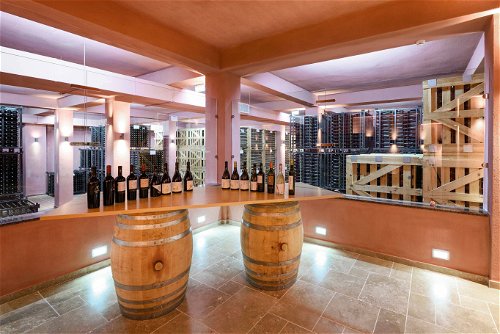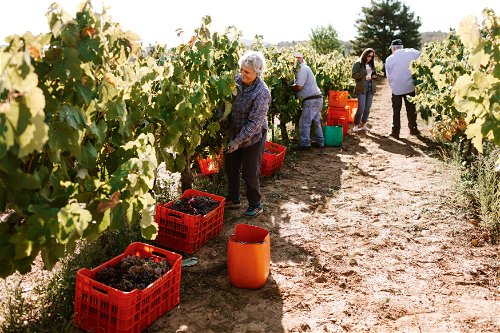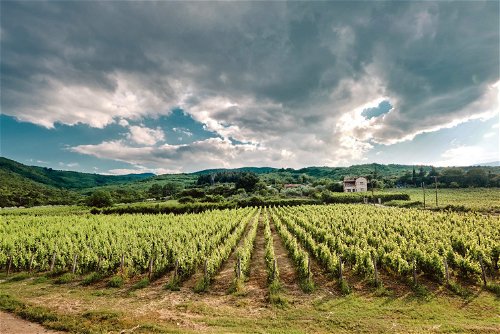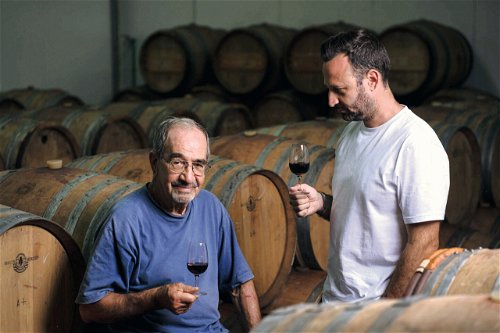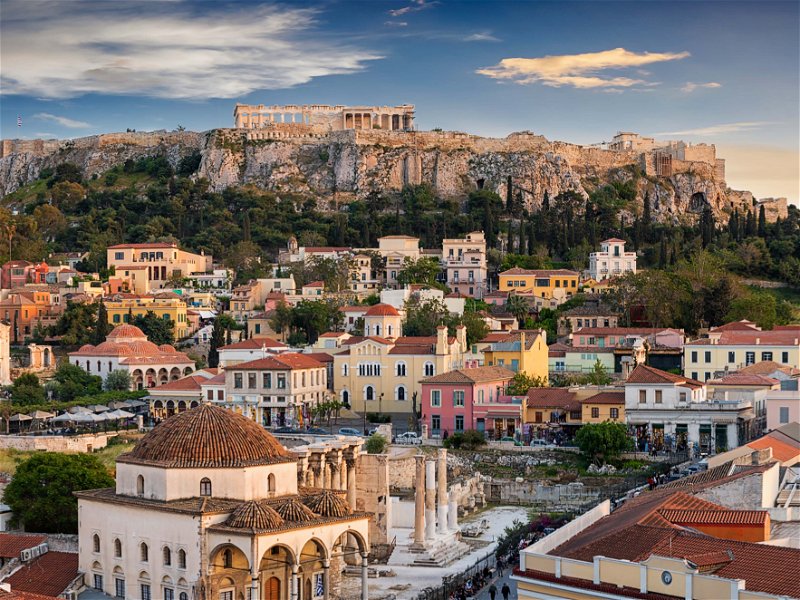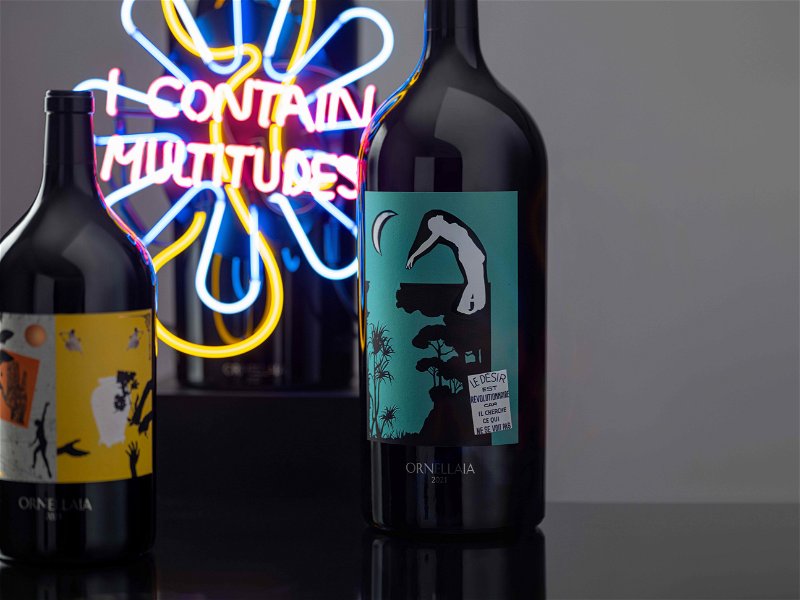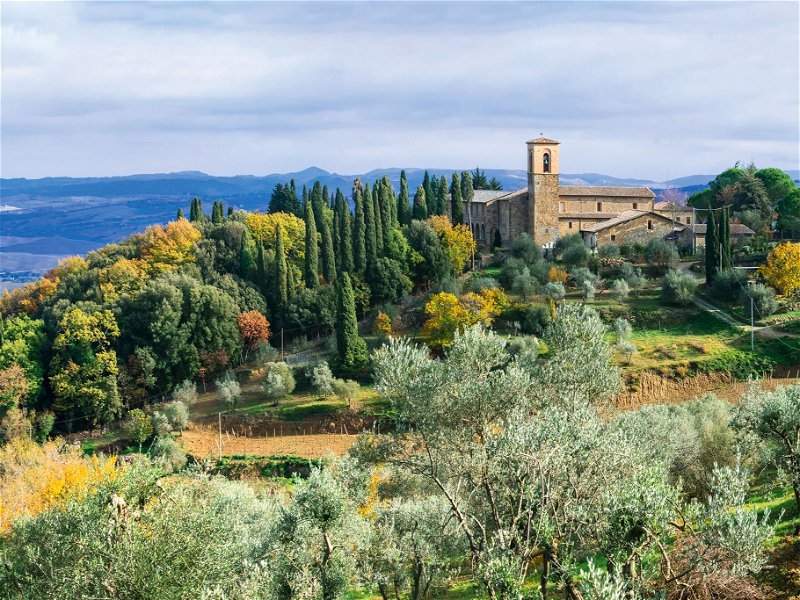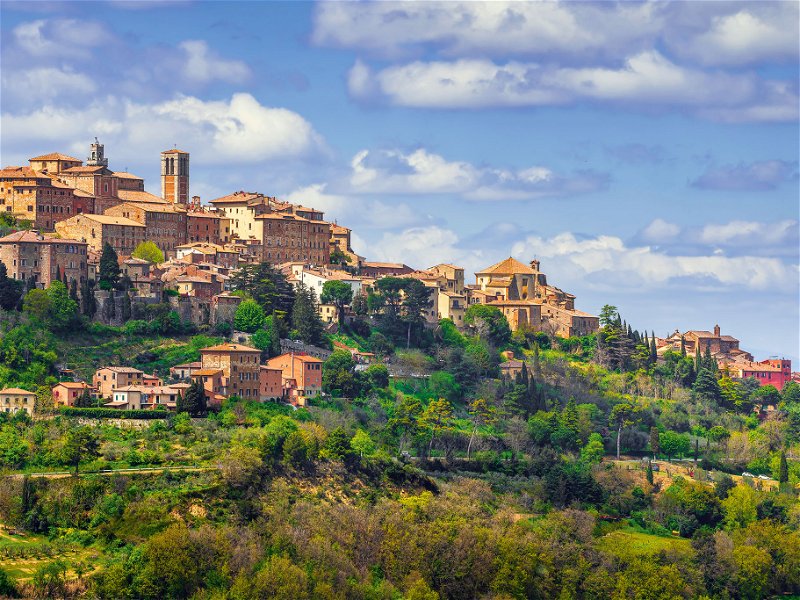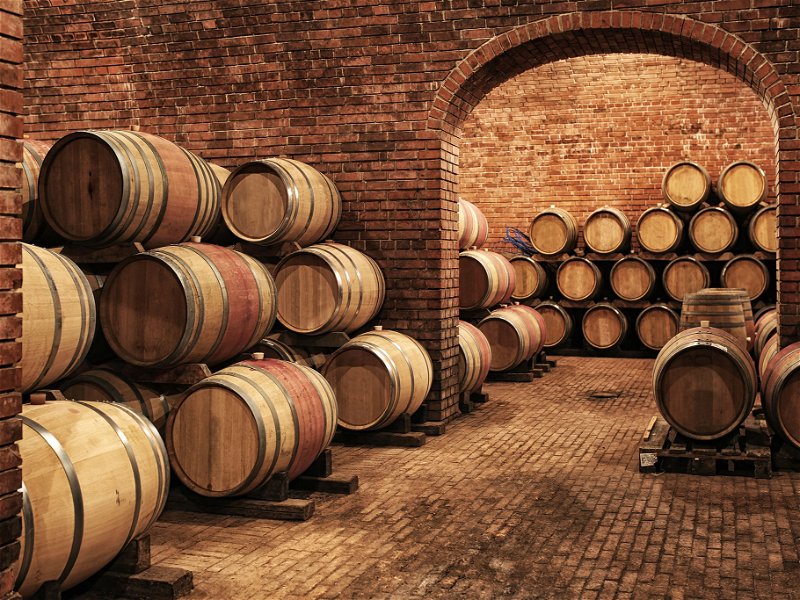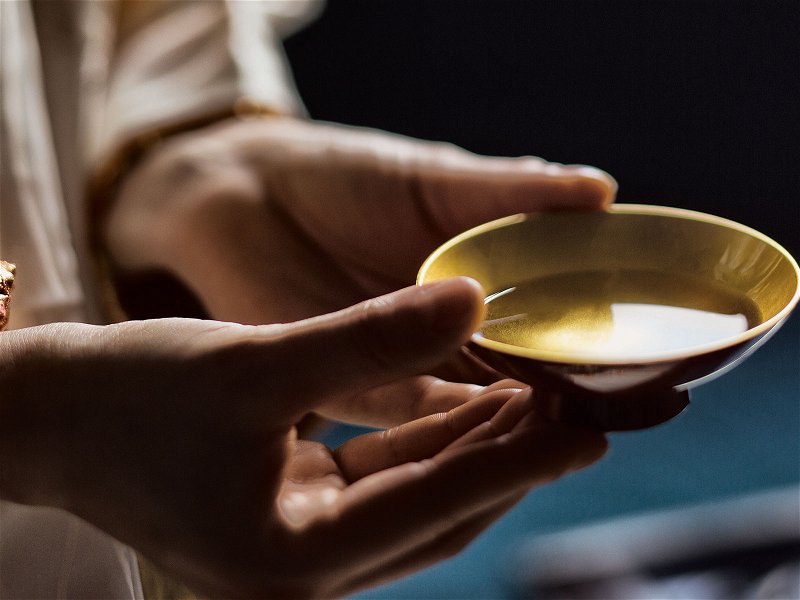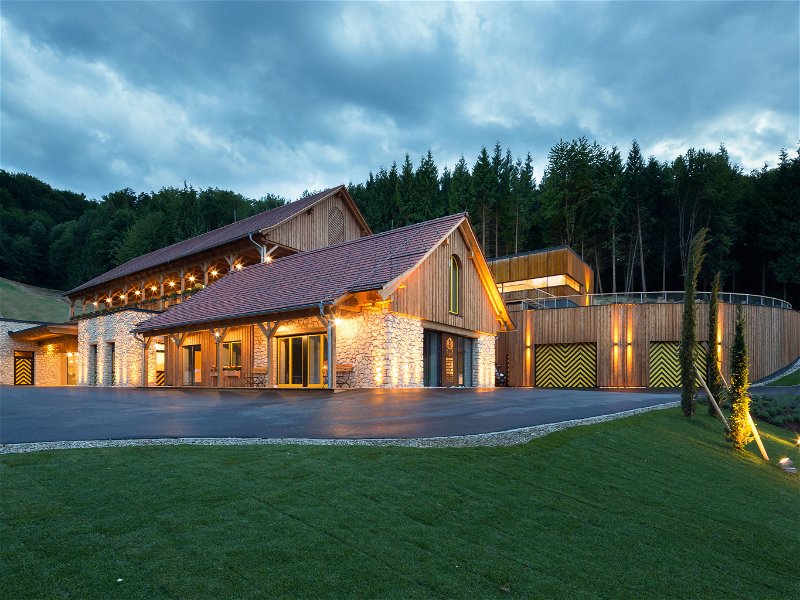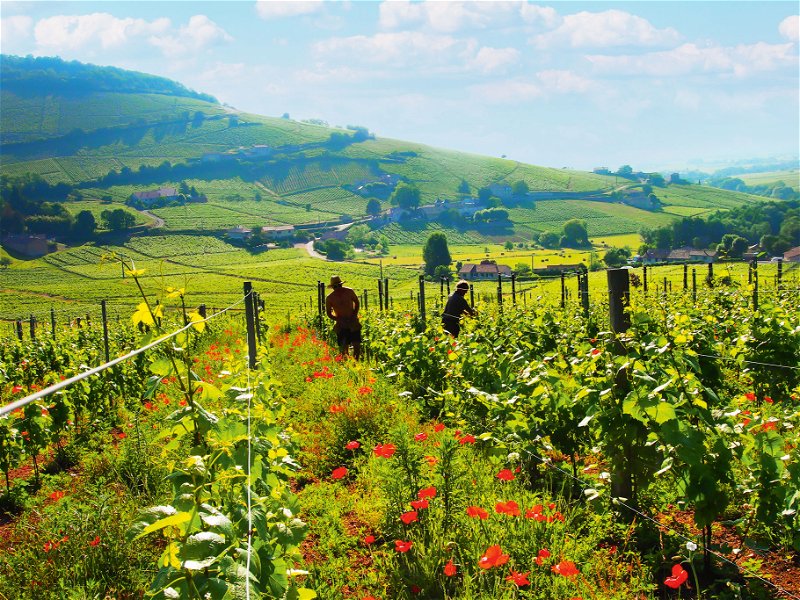Rising Stars: How the Next Generation is Revolutionizing Greek Wine
From its ancient roots through turbulent times, the Greek wine industry is being transformed by young, innovative vintners crafting diverse, world-class wines. Embark on a journey through the vibrant vineyards of Greece.
It was exactly 50 years ago, when Udo Jürgens with "Griechischer Wein" released one of his biggest hits. In 1974, he described the feeling of his guest workers in Germany who dreamed of home, of Greece, which would soon become one of their employers' favourite vacation destinations. 1974 was also the year in which the military dictatorship in Hellas ended and the country found its way back to democracy, which was introduced in Athens over 2500 years ago.
The traditional wine industry was also revived and five large wineries called Achaia Clauss, Boutaris, Kambas, Koutrakis and Tsantalis were established, whose branded wines dominated the taverna tables. Greeks and their guests, including those in the pubs that were increasingly popping up in German-speaking areas, drank resinated wine, retsina, dry white Santorini, spicy-tart red Naoussa, lovely Mavrodaphne or sun-sweet Samos. It wasn't always an uplifting experience in terms of wine quality, but the atmosphere was warm and after the third ouzo no one thought about the quality of the wine.
In the following decades, the Greek wine world continued to develop steadily, albeit rather unnoticed. The number of private wineries increased and they found their consumers in the cities, where a new, more refined gastronomy developed. The first sommeliers started working in restaurants in the 1990s, and today the number of these wine professionals has long since reached three figures. In the first decade of the new millennium, the young generation of Greek winemakers studied oenology in France and completed internships all over the world. The modern wine industry in Greece today benefits from this know-how.
However, the economic collapse of 2010 put an abrupt end to the upswing, and the young wine experts went abroad for small money with a heavy heart; once again, the old song rang in their ears. Wine producers now had to seek salvation in exports. The company had to face up to the international competition, and to this end, the quality screws were tightened considerably.
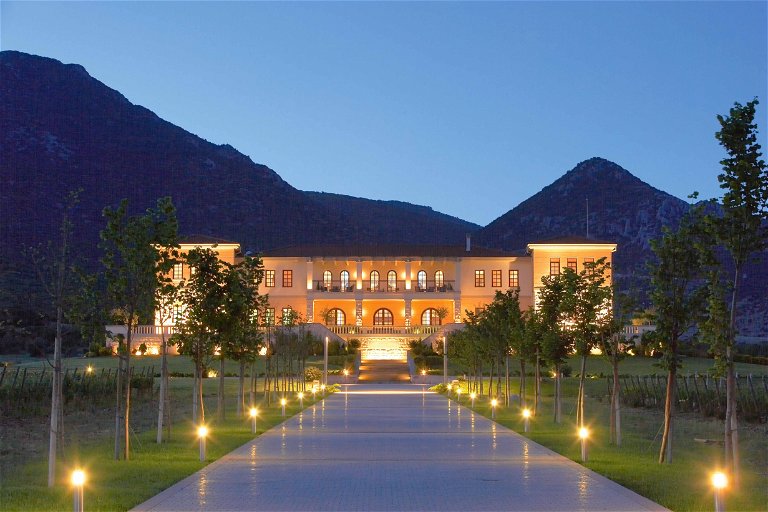
Back with new ideas
The emergency made the most capable wineries fit for the future, and a few years later many of those who had gone abroad returned home with new ideas. The first new wine bars opened in Athens as early as 2012, and a real wine boom saw new wineries and projects spring up like mushrooms. Experts estimate that the number of wineries has quadrupled in the last ten years - a trend that is still continuing.
A young, lively scene of producers is constantly filling the shelves of specialist retailers with new labels, natural wines are very popular, and pet nat, amphora wine and rosé are also very much in vogue, with hardly any wine retailing for more than 20 euros.
Today, there are already around 2000 wine producers in Greece vying for the favour of connoisseurs, and new labels are still entering the market. Even the leading local wine merchants find it difficult to maintain an overview. The supply is extremely diverse and dynamic, with wine coming from the mainland as well as from numerous small and large islands, and availability is often limited to the immediate surroundings.
Thanks to the good international contacts of the young generations, the limited edition wines of some start-ups are now often easier to find abroad than in Greece itself, as the natural wine scene in particular is well networked.
Shrinking vineyards
The area planted with vines has fallen by around ten percent in the last five years to less than 100,000 hectares, with 96,000 hectares of vineyards reported most recently. How much of this is used to make wine - dessert fruit and raisins are a factor - can only be estimated. In 2022, 2.1 million hectolitres of wine were produced in Greece, compared to 2.3 million in Austria. This allows the conclusion that around 60,000 hectares are actually used for wine production in Greece.
The three largest growing regions on the mainland in terms of area are central Greece, then the Peloponnese and finally Macedonia in the north of the country, with Thessaly in the east and Epirus in the west between the latter two.
Historical centre
Central Greece refers to the province of Sterea Ellada, translated as "the solid land", the ancient settlement area in southern Thessaly including the metropolis of Athens and the Gulf of Corinth, including the large peninsula of Euboea. This is where the most densely populated regions of Greece are located and, with the long-distance port of Piraeus, also the most important export hub alongside Thessaloniki. Numerous wine appellations are spread across this region under varying conditions, with high rainfall in the west, cool temperatures in the high altitude centre, and dry and hot conditions in Attica like nowhere else in Greece. More than a quarter of the vineyard area is located in central Greece, and until three decades ago, everything here had a single motto: retsina.
The original until about thirty years ago, this seemingly resinous wine was nothing less than the driving force behind the country's wine industry. Retsina is still important today, its production is not tied to a specific variety, but here too, the better the base material, the better the result. The most common white grape variety is Savatiano, which does well in the hot and dry conditions of central Greece, but is rather low in acidity. The base wine is therefore often blended with Assyrtiko or Roditis to remedy this deficiency. The latter varieties are also refined into high-quality Retsina wines. You will search in vain for the vintage of Retsina because it is a table wine, but you will usually come across a lot number which, on closer inspection, provides information about the vintage. The most important areas of origin of retsina are the regions of Attica, Boeotia and Euboea, which are located in the Athens area.
As early as the end of the 19th century, the Athenian "Kapilia", basically quite primitive tavernas, became ambassadors of the renaissance of this style of wine, which, thanks to the tourists in the 1960s, later reached its commercial zenith. As the quantity increased, the quality deteriorated and so did the reputation of Retsina. Critics not unfoundedly described it as the "longest nail in the coffin of Greek wine culture." In recent years, the situation has changed completely, as the quality of resin wines has never been as good as it is today.
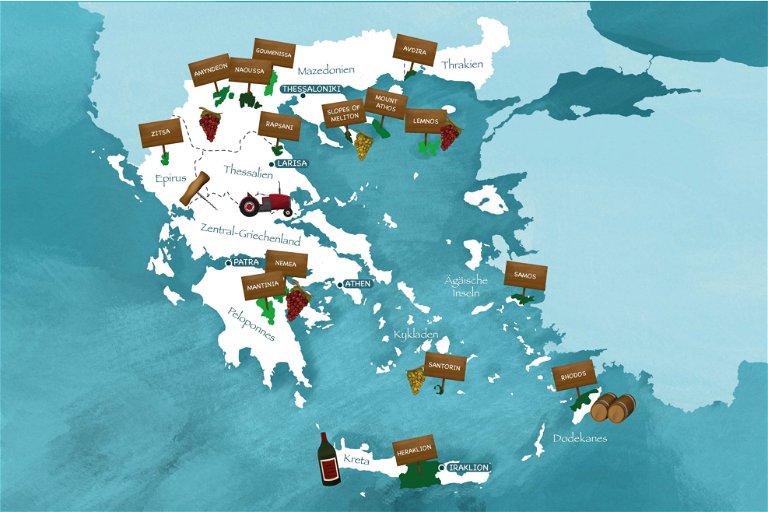
Red and white in the south
The large hand-shaped peninsula in the south, the Peloponnese, is today the origin of many top Greek wines. The long history of this wine-growing region can only be touched on here in keywords, as wine has been produced here for 4000 years, although some experts go back much further. The first "international" fame came from the sought-after sweet wines that were shipped via the port of Monemvasia from ancient times until the 16th century, which gave Malvasia its name. Viticulture was neglected under the Ottomans, but immediately after their departure, vines began to be planted again in the early 19th century.
Instead of wine, the focus was now on the lucrative production of raisins, especially near Corinth in the north of the Peloponnese, and on the island of Zakynthos many tons of Corinthiaki were produced for the world market. It was only after the Second World War that the picture changed and viticulture regained its strength, particularly in the centre and north of the peninsula, with the Patras region, but also Nemea and Mantinia, becoming the focus for high-quality wines.
For a long time, the Peloponnese was dominated by white wine varieties, with only the central highlands of Nemea near Corinth being known for its good red wines. These are determined by the autochthonous Agiorgitiko variety, a highly elegant red wine variety that has the advantage of being aged in French barriques. However, Nemea and Agiorgitiko have an equal opponent in the battle for first place in the Greek red wine match: Naoussa in the north of the country with the top variety Xinomavro.
Larger wineries such as Gaia and Semeli have contributed a great deal to the growing reputation, while numerous boutique wineries complete the range. The best original dry white wines from the Peloponnese are those from the Mantinia appellation in Arcadia, where the incomparable pink-skinned Moschofilero grape variety has been cultivated since the late 1980s. Yiannis Tselepos initiated the renaissance of this variety, and numerous top winemakers such as Troupis and Spiropoulos followed in his footsteps. Today, the white Mantinia, with at least 85 percent Moschofilero, is the most important wine with protected origin from the Peloponnese after the red Nemea. Just outside the appellation, George Skouras produces outstanding white and red wines in Argolida.
The diverse north
There are a large number of official designations of origin in the Greek province of Macedonia, which is divided into Western, Central and Eastern Macedonia and the respective prefectures in three parts. Macedonia forms Greece's northern border with Albania, North Macedonia and Bulgaria, with Epirus and Thessaly to the southwest and Thrace to the east as neighbouring provinces. Viticulture finds very good conditions here in the north of the country, as the Mediterranean heat is less noticeable in the wines, and numerous rivers and lakes, combined with higher rainfall, ensure a good water supply.
Macedonia is basically a wine country characterised by red wine, the Xinomavro variety is its flagship. But in the cooler zones, in addition to rosé wines, fine white wines are also produced, which can bring much more freshness than those from other Greek growing zones. The coastal areas of Macedonia, especially Halkidiki, offer completely different conditions, which we will discuss in more detail later.
There are two important indications of protected origin on Greek wine labels. At the top these are the terms PDO (Protected Designation of Origin) and PGI (Protected Geographical Indication). The four Macedonian PDO areas are Amyndeon, Naoussa, Goumenissa and Slopes of Meliton. The list of PGI origins currently names 24 regions, several of which - such as Drama, Kavala, Siatista and Epanomi - have long deserved to be upgraded to PDO status. Mount Athos is also counted among the Macedonian PGIs.
A special feature in every respect
Naoussa PDO has around 500 hectares and around 20 bottling plants, where 100 percent Xinomavro is the prescribed grape variety, as is also the case for Amyndeon PDO. Naoussa is the top red appellation, the Barolo of Greece, so to speak, and the density of top winemakers here is enormous. The Kir-Yianni winery is the pioneer; the best wines today come from Thymiopoulos, Talaras, Dalamaras and Foundi. For the red wines of the PDO Goumenissa in the province of Kilkis, in addition to Xinomavro, a minimum 20% share of the regional Negoksa variety is also prescribed.
The fourth PDO, Slopes of Meliton, is special in every respect. It is located in Sithonia on the middle finger of Halkidiki and was the first PDO to be approved for international grape varieties in 1982. The result is a white wine that consists of half Athiri, 35 percent Assyrtiko and 15 percent Roditis. The red wine consists of Limnio, an ancient variety also known as Kalambaki, plus Cabernet Sauvignon and Cabernet Franc at a maximum of 30 percent.
Friends of rare varieties
The PDO Slopes of Meliton is produced by a single, legendary vineyard called Porto Carras. Northern Greece has two other PDO zones, the PDO Zitsa in Epirus and the PDO Rapsani at the foot of the Olympus Mountains in Thessaly.
And last but not least, the islands: of all the islands, the volcanic island of Santorini plays first fiddle with its great white wine variety Assyrtiko, with numerous top winemakers such as Paris Sigalas, the Hatzidakis family, Argyros Estate and Karamolegos producing world-class white wine here. On Tinos, T-Oinos Tiniaki and Volakus produce mineral wines, while Moraitis is the leading winery on Paros. On Samos in the northern Aegean, there is the large cooperative, while in Lemnos, the fine sweet wines from Limnos Organic Wines are a popular choice. There is a lively scene on Crete, in Chania Manousakis is recommended, in Dafnes the top restaurant is called Douloufakis. Fans of rare varieties are sure to find what they are looking for at Lyrarakis in Heraklion.
Retsina
A sip of antiquity
Resinous, but hearty: at first, the Greeks thoroughly ruined it for wine lovers with their acetone-tinged, yellow-brown tourist plonk with a petrol station bouquet, but today, precisely vinified retsinas, together with the best Greek terroir wines, are actually very popular again. In times when cloudy natural wines are experiencing a hype and wine faults of all kinds are not criticised but celebrated as strengths of character, a good, light-coloured Retsina - the classic from Greece with nuances of pine and mint - seems like a blessing in comparison. Most importantly, yes, you can dare to order a bottle of retsina again today. The term refers to table wine with a distinctly resinous aroma and taste.
In ancient times, sacks made of goatskin or clay amphorae sealed with pine resin were used for storage and transportation. After a certain time, the resin gave off unmistakable aromas that consumers became accustomed to over time. The wines influenced in this way were called retsina, resin wines. In addition to influencing the taste, the resin had another, much more important effect on the wines: it made them more durable. And this is probably the reason why people in the warm climate of Greece have maintained this tradition, even when the wine was no longer matured in leather hoses but in barrels and bottles. In order to achieve a similar result, people began to add small pieces of resin to the wine during fermentation. In the 1960s, the resin content was still five to seven percent, which also helped to cover up off-flavours caused by the vinification process.
Today, the resin content is significantly lower at one to two percent, so it's more like retsina light. When the wine is first drawn off, the solid resin is also filtered out of the wine. The resin of the Aleppo pine (Pinus halepensis) is used, but also that of the Calabrian pine (Pinus brutia), which is native to Greece. Sandarak, a resin from the sandarak tree native to Morocco, is also used in some cases. The name Retsina does not refer to a Greek grape variety, as some people still think: Retsina is an ancient type of wine that bears the designation "appellation according to tradition". Since 1940, only products from Greece and Cyprus have been allowed to be marketed under this name. Look out for producers called Kechris, Mylonas or Tetramythos; you'll have come to the right place.
Don't miss out!
Sign up now for our newsletter.

